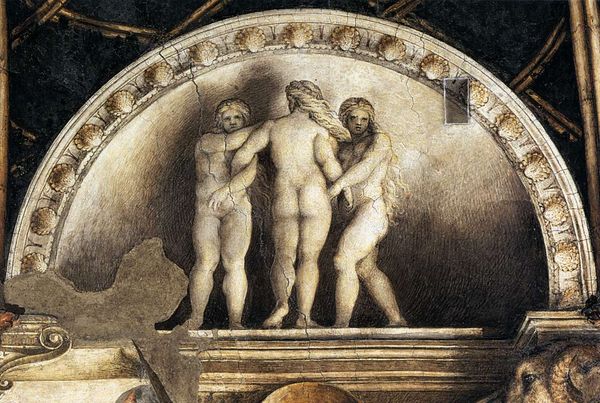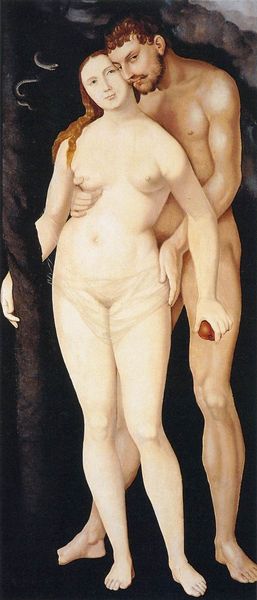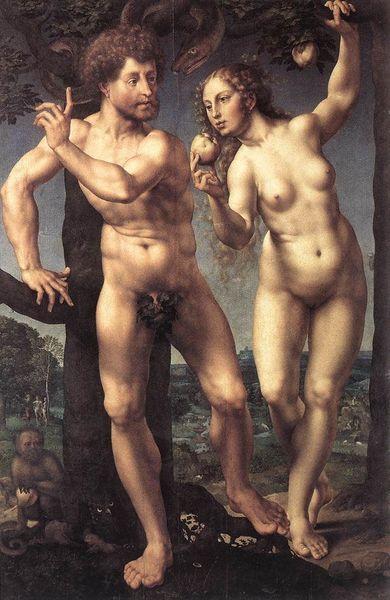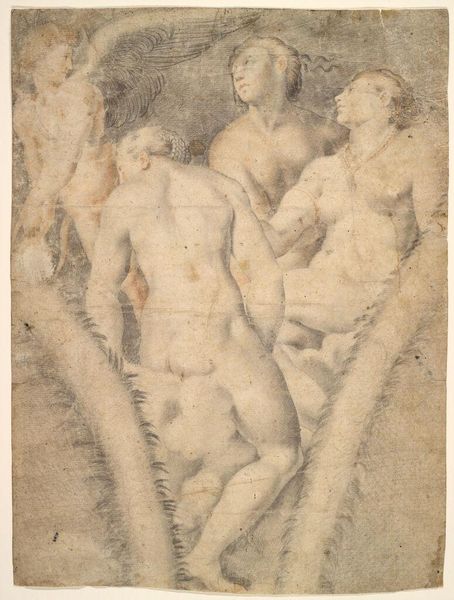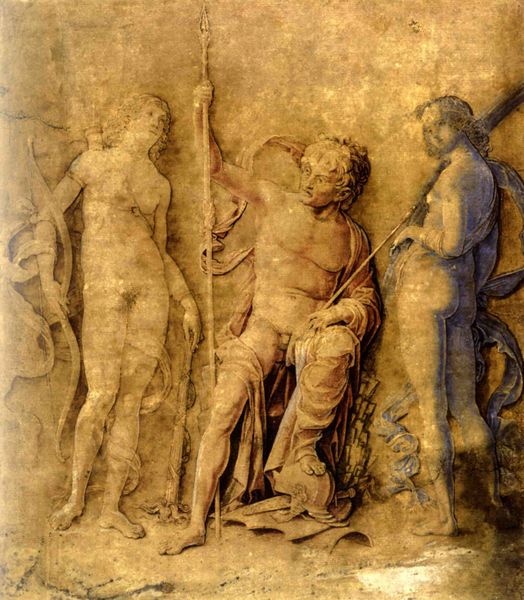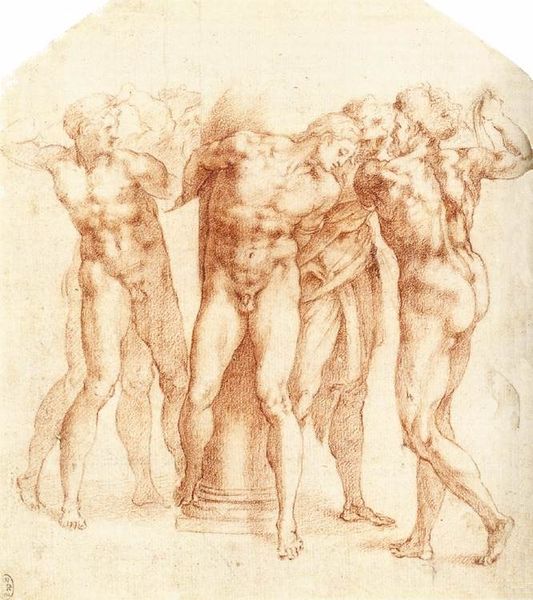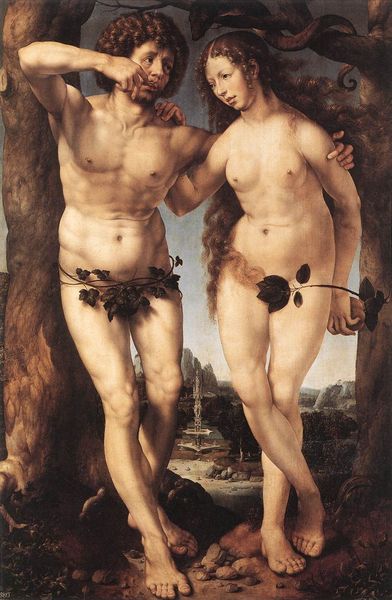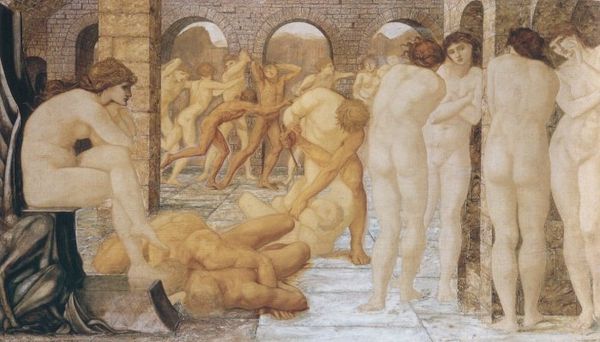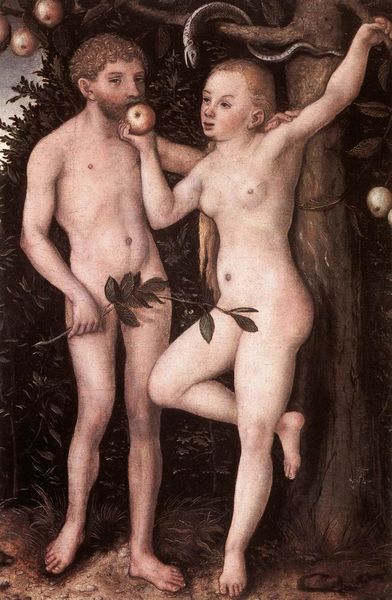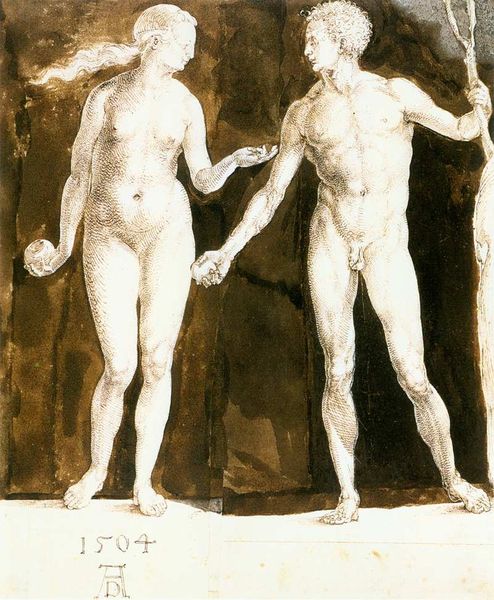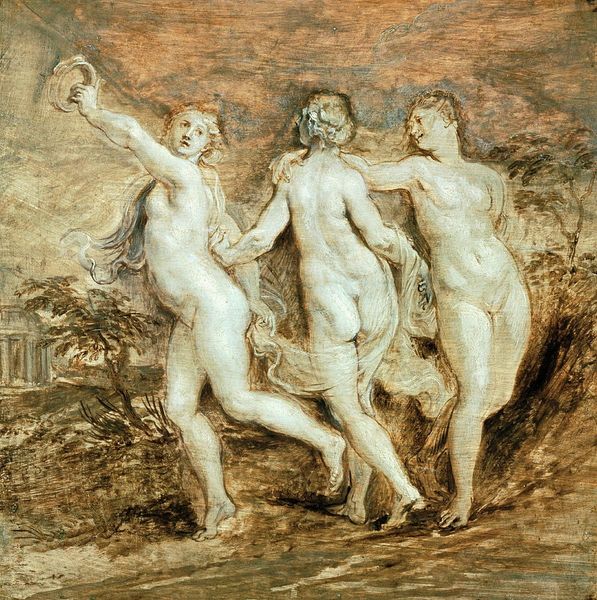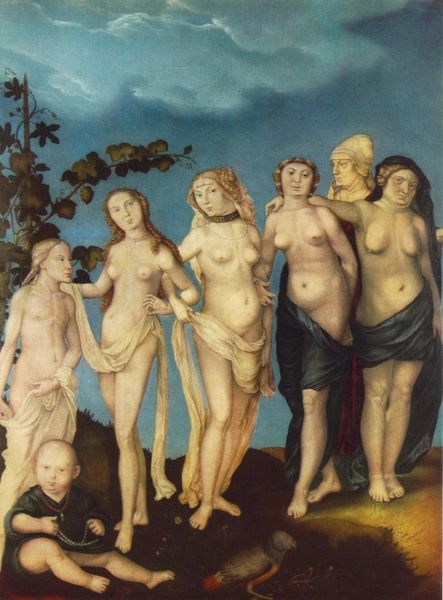
painting, oil-paint, sculpture
#
allegory
#
baroque
#
painting
#
oil-paint
#
sculpture
#
figuration
#
oil painting
#
sculpture
#
group-portraits
#
mythology
#
human
#
history-painting
#
nude
Dimensions: 47 x 34 cm
Copyright: Public domain
Editor: Here we have Rubens' "The Three Graces," painted in 1623. It's an oil painting, and frankly, the figures exude this incredibly fleshy, almost overwhelming sense of vitality. I can't help but feel drawn in by their... presence. What strikes you most about this piece? Curator: Oh, "presence" is absolutely the word! For me, it's how Rubens takes this classical subject—the Graces representing beauty, charm, and joy—and injects it with a palpable, breathing reality. These aren’t idealized goddesses in some remote heaven; they're women, full of life and...well, *Rubensian* curves! It’s a bit of cheeky subversion, wouldn't you say? Editor: Subversion, totally! I mean, they’re goddesses, but also undeniably *earthy.* The painting feels less like reverence and more like... a celebration? But a celebration of what, exactly? Curator: A celebration of the senses, I think. Of the joy in the here and now. The Baroque was all about that dramatic engagement, that emotional intensity. He's asking us, subtly, "What do you find beautiful?" Perhaps he wanted the viewer to reflect on that...What *do* you find beautiful about it? Editor: I appreciate that he captures his wife's body type, it gives the art a sense of intimacy. Curator: A shared glimpse into the everyday. His works encourage introspection in a way you would never expect from art portraying deities. Editor: Definitely changed my perspective. It's not just mythology, it's an invitation to consider earthly joy and real connections. Curator: Precisely. It’s about bringing the divine down to earth, so to speak, and finding the sacred in the sensual.
Comments
No comments
Be the first to comment and join the conversation on the ultimate creative platform.
